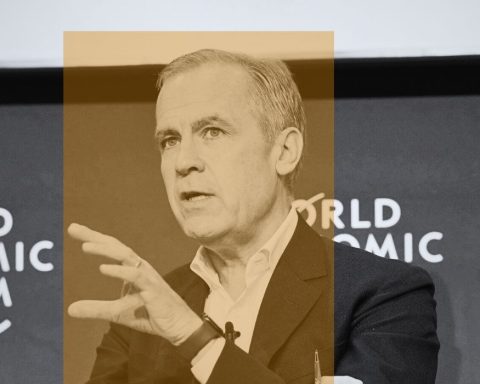Last year was disappointing for anyone expecting quick action from the financial industry to address the growing climate emergency gripping the planet.
The year started optimistically, fresh off the bold and ambitious agreement in November 2021 that established the Glasgow Financial Alliance for Net Zero (GFANZ). GFANZ assembled some of the world’s most powerful financial institutions to fight global warming by pledging to bring loan and investment portfolios worth US$130 trillion to net-zero by 2050.
But within months, that optimism started to wither as leading members threatened to leave the alliance after learning they were expected to implement stringent emission cuts by 2030. By November, GFANZ organizers conceded that the 2030 emission-reductions targets would not be mandatory, acknowledging the one-year-old agreement had no teeth.
This surrender was part of a wider pullback, as banks, investment funds and asset owners axed billions of dollars from sustainable investment funds and reined in marketing excesses.
What caused this turnaround? And what does it mean for the future? Here are five trends that helped to shape this astonishing shift, as well as a look to the next 12 months as sustainable finance reimagines its future.
North American banks dug in on fossil fuels and pressured GFANZ to capitulate
Climate advocacy organizations ramped up criticism of North American banks in 2022 as the banks touted their 2050 net-zero commitments while also lending billions to oil, gas and coal projects. Canadian and U.S. banks accounted for nine of the 12 largest financiers to the fossil industry in 2021, according to Banking on Climate Chaos, a report published in 2022 by BankTrack. North American banks also increased their oil, gas and coal financing by 23% in 2021.
With such heavy involvement in the global fossil fuel industry, it’s not surprising that three of those banks (JPMorgan Chase, Morgan Stanley and Bank of America), along with a group of unnamed Canadian banks, successfully pushed GFANZ in 2022 to lift stringent new CO2 reduction rules. The rules set by the United Nations Race to Zero campaign would have required GFANZ signatories to stop financing new fossil fuel projects and to cut CO2 emissions by 50% by 2030. Lifting the rules was a big concession to these signatories, allowing them to continue as GFANZ members even if they failed to meet the 2030 reduction targets.
Index fund managers slow-walked on net-zero
Like the major banks, large asset managers also touted their GFANZ commitments. But research released in the summer of 2022 revealed a big gap between their 2050 net-zero commitments and the degree to which their emission targets were on a net-zero pathway. This was particularly true of low-cost, passively managed index funds, which invest in companies in proportion to their size in the market (regardless of CO2 emissions).
Vanguard Group, the world’s second-largest asset manager and a major index investor, came last on the study’s list of 43 asset managers, at 4% net-zero assets under management. Pointedly, Vanguard quit GFANZ in December, saying it aims to “provide the clarity our investors desire about the role of index funds and about how we think about material risks, including climate-related risks.”
More than US$8 trillion removed from sustainable investment tally
Against this backdrop of net-zero commitments, investors, regulators and the media started paying more attention to the staggering growth in assets claimed to be invested under sustainable or responsible strategies. In the U.S., for example, assets defined as “sustainable” tripled between 2013 and 2019, from US$6.6 trillion to US$17.1 trillion, prompting industry insiders to express doubt about how such a huge run-up could happen without greenwashing.
In 2022, the US Forum for Sustainable and Responsible Investment (US SIF) and its Canadian counterpart, the Responsible Investment Association (RIA), took a hard look at how they measure assets that incorporate environmental, social and governance (ESG) criteria (which is the industry definition of sustainable investment).
The review resulted in a big decrease in the industry estimate of U.S. sustainable investment, to US$8.4 trillion at the end of 2021. Canadian assets declined to $3 trillion from $3.2 trillion in 2019.
Asset managers showed restraint in identifying their assets as “sustainable” in the 2022 surveys, removing trillions of dollars from the total. This was triggered in part by stiff anti-greenwashing proposals from the U.S. Securities and Exchange Commission (SEC) and ramped-up Canadian regulatory guidance.
As well, the two organizations tightened their methodology for this year’s reports, excluding assets from managers who claimed to employ “ESG integration” strategies but were unable to identify or document specific ESG policies.
Republicans slammed ESG as ‘woke’ and boycotted sustainable asset managers
Meanwhile, sustainable finance also had to stave off a backlash against ESG from conservative critics in the U.S. “The woke left is poised to conquer corporate America,” said former U.S. vice-president Mike Pence in May. By August, Texas had banned 10 asset managers and about 350 investment funds from doing business with the state. By the end of the year, 35 anti-ESG bills had been introduced in state legislatures, although only 15 had become law.
BlackRock and Vanguard took much of the brunt of the conservative attacks for supposedly avoiding investment in oil and gas companies, although the two companies are index investors that hold billions of dollars in fossil fuel assets. The companies were summoned to the Texas state legislature to explain themselves, but Vanguard was excused after it quit GFANZ, a development that many in the ESG community fear will have a chilling effect and could spread to other investors.
European asset managers struck US$140 billion from ‘dark green’ investment category
Citing potential greenwashing from the expansion of sustainable funds in Europe, European Union regulators established the Sustainable Finance Disclosure Regulation in 2022, requiring funds to categorize themselves as dark green, light green or conventional, based on the degree to which investments support sustainability. The regulation has alarmed the industry, prompting managers to downgrade at least US$140 billion in funds previously identified as dark green.
The finance industry “sprinkled ESG fairy dust” on many of these funds, says Paul Clements-Hunt, who invented the ESG term in 2004 during his work for the UN. “Anybody who uses ESG, sustainability or green purely as a marketing device is really heading for trouble. You’ll see a developing queasiness from marketing departments where, perhaps, ESG funds aren’t all what they’re cracked up to be.”
So what’s ahead for 2023?
Under pressure from regulators, climate campaigners and conservative Republicans, sustainable finance is quickly moving away from the marketing excesses of the past. But will it switch its focus to real and documented social and environmental change? Here are some reasons for cautious optimism.
HSBC, European banks lead on net-zero
HSBC, the largest bank in Europe, announced it will cease financing new oil and gas projects, although the policy won’t apply to its Canadian unit being taken over by Canadian bank RBC. HSBC joins Dutch bank ING and La Banque Postale of France in stopping new fossil fuel financing. HSBC’s announcement is “a hugely important symbolic step,” says Matt Price, director of corporate engagement for Canadian advocacy organization Investors for Paris Compliance.
Biden act could jump-start U.S. green investment
The U.S. Inflation Reduction Act approved in 2022 has been called the most significant piece of climate legislation in American history. But it also could be instrumental in kick-starting private investment in renewable energy and green industry. A policy brief from the Environmental Defense Fund shows that some of the law’s key climate-finance programs could leverage 10 times more investment from the private sector. Federal spending of US$38.7 billion on a new green bank, infrastructure projects and additional support for energy loan programs could translate into private investment of $385 billion.
Ukraine war accelerates renewable energy ramp-up
The Ukraine war has been a boon to the oil and gas industry, driving up prices and stock values and eroding returns on ESG funds with zero or light exposure to fossil fuels. But the war could also accelerate investment in renewable energy as countries look for ways to avoid high-cost fossil energy. The world is expected to build 2,400 gigawatts of new generating capacity, mainly from solar and wind energy, in the next five years, says a report from the International Energy Agency, equal to China’s entire current generating capacity.
Regulators will push back against greenwashing
Financial regulators in the U.S. and Europe will continue to put pressure on sustainable funds to label themselves appropriately and disclose their sustainability objectives. Look for even more fine-tuning from EU regulators on rules for sustainable finance disclosure and investments qualifying for its new green taxonomy tag. In the U.S., the SEC has released proposals requiring that 80% of a fund’s assets adhere to the ESG approaches specified in its name. What’s more, the historic COP15 biodiversity agreement to protect 30% of the planet by 2030 is also expected to create new disclosure obligations on funds to report their impacts on biodiversity and natural capital.
Meanwhile, maybe, Canada will move forward
After years of regulatory dithering, Canada is tentatively getting its act together on financial rules to support its climate goals. Already a leader on carbon pricing, Canada is now moving to require banks and other federally regulated financial institutions to develop and report on how climate risks affect bank operations and financial stability. As well, Canada is developing a taxonomy for green and transition finance, similar to Europe’s green finance taxonomy. While a lot of the Canadian taxonomy still needs to be finalized, an early draft obtained by the Globe and Mail suggests new oil and gas projects could be disqualified from the green label, discouraging investment from funds and money managers.
ESG overwhelmingly popular with young investors
And, over the long term, young investors are expected to generate strong demand for sustainable finance that creates impact. A survey of 2,470 investors in 2022 found that almost 80% of investors 41 years and younger want investment companies to use their size and voting power to influence the environmental practices of the companies they are invested in. This compares with 42% of older investors.
What’s more, younger investors expressed support for such activism, even at a financial cost. “ESG activism is clearly driven by younger investors,” said Amit Seru, professor at the Stanford Graduate School of Business, which sponsored the study. “Investors under 40 want to make progress across a broad range of environmental and social initiatives and claim to be willing to suffer personal financial loss – sometimes very large loss – to see those changes realized.”
This may be the best reason yet to feel some optimism that sustainable investment can be a tool for climate action in 2023 and beyond.
Eugene Ellmen is a former executive director of the Canadian Social Investment Organization (now Responsible Investment Association). He writes on sustainable business and finance.







